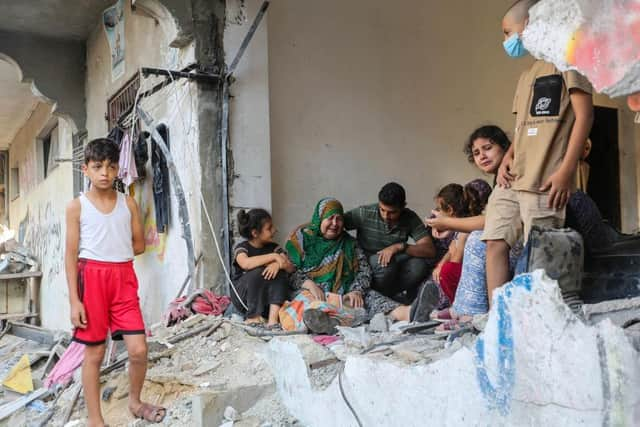Israel-Hamas conflict: Why readers should be careful about fake news around Israel and Hamas attacks
Is Israel really bombing Gaza, resulting in mass casualties and a looming humanitarian crisis on an horrific scale? Did Hamas – or did it not – commit atrocious acts of terrorism on Israeli soil three weeks ago?
The answer to both, obviously, is yes. But some factions of social media still believe there is little truth to either claim.
Advertisement
Hide AdAdvertisement
Hide AdFake news is prevalent in the conflict, used by advocates on both sides to back up their points of view – and deny claims made against their allies. While some fake news can be deemed merely bias or denial, other information is blatantly untrue – and even involves elaborate set-ups.


Perhaps most famously, a debate over an Israeli claim that Hamas beheaded 40 babies in a kibbutz on October 7 was eventually found likely to be untrue. However, this was not uncovered before the story had been run by international news outlets and commented on by US president Joe Biden.
One video circulated widely on social media showed an injured man in his 20s or early 30s, hooked up to machines in a hospital bed, purportedly in Gaza. Doctors busied around him.
The narrative was he had been hurt, like many other people, in an Israeli air attack. The reason this video was shared so many times, however, was because someone suggested it was not real. The man, they insisted, resembled a Hamas actor, who had taken part in previous propaganda videos.
It is difficult to know whether or not this man’s situation was real or not. As an actor, he could still have legitimately been hurt. After all 5,000 people in the 2.5 million-strong community have already died, with hospitals treating thousands more injured.
Or it may be a set-up. I don’t know. Another video shared earlier in the conflict showing injured people in hospital was later discovered to be footage from a documentary about the Gazan film industry.
Meanwhile, over the past two weeks, the story of two four-year-old boys, Omar Bilal al-Banna and Omer Siman-Tov, living on opposite sides of the Gaza-Israel border, who both died in the recent conflict, has been questioned.
Israel’s embassy in France actually published images of the body of the Palestinian boy, Omar, claiming it was a Hamas set-up.
Advertisement
Hide AdAdvertisement
Hide Ad"Hamas accidentally released a video of a doll (yes, a doll) used in a staged attempt to make people believe the death of a baby following Israeli strikes,” it wrote on October 13.
In fact, a BBC reporter, Marianna Spring, took time to dig deep into this case and has verified both of the boys’ tragic deaths.
She said a pro-Israeli account had initially shared the video – and the claims the body of the child was a doll – which had then been given credence by the Israeli authorities.
"According to X, that post containing the video and false claims has been seen 3.8 million times,” Ms Spring said. “The allegations it made were then amplified by the State of Israel's official account on X.”
The scale of the disinformation network is vast – and terrifying. But my question is, why?
Some of the fake news, such as the hospital documentary video, depicted footage akin to that which could, and has, legitimately been taken from the real conflict. The “actor” in the hospital bed had no more harrowing a story than thousands of other injured Gazans.
As a reporter, I have to be careful about what I read online – and so should you.
Comments
Want to join the conversation? Please or to comment on this article.
